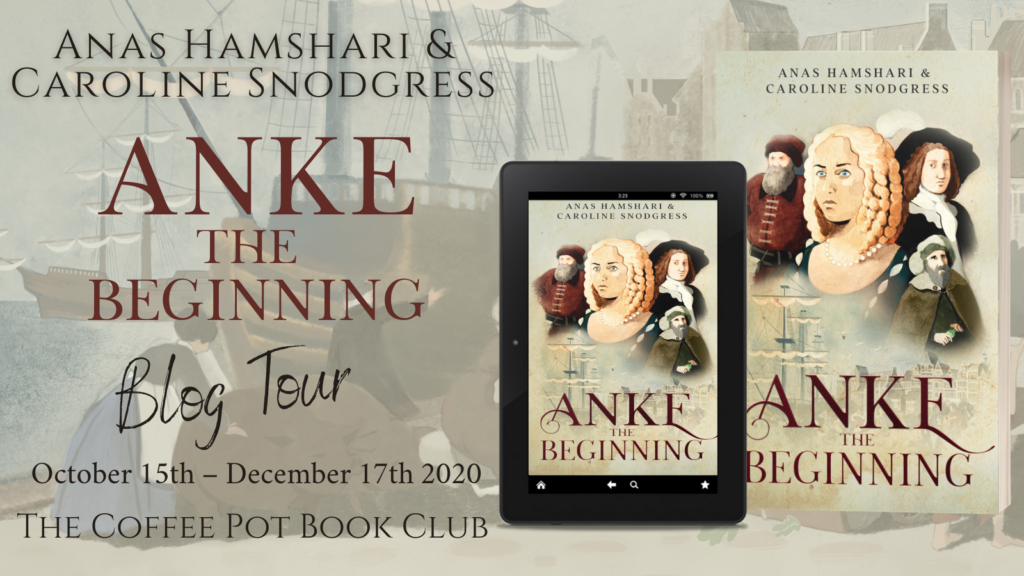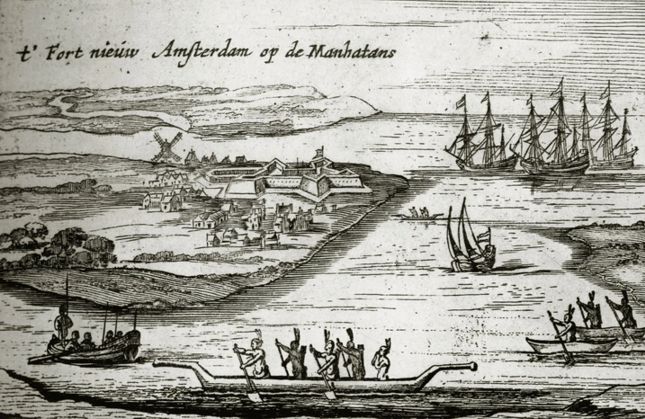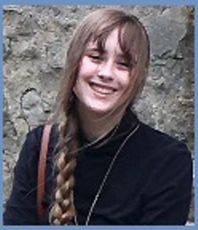
By Anas Hamshari and Caroline Snodgress
Living in the city of Mechelen, just south of once-prosperous Antwerp, in the aftermath of the Thirty Years’ War, Anke Verhaegen, an ambitious nineteen-year-old, is determined to make the most of her life.
When her brother Johan suggests crossing the Atlantic to New Netherland, Anke knows this is her destiny. Together, the two set about attempting to secure passage across the sea.
Before long, their plans are in motion, and hopes are high. Yet, with vengeful enemies, secrecy, and danger on the high sea waiting to be faced, will Anke really be able to secure a better life for herself?

New Netherland was a colony of the Dutch Republic, located on the east coast of what is now the United States. The colony was formed during its mother country’s war for independence from Habsburg Spain, with settlements appearing during the first two decades of the seventeenth century, and remaining under Dutch control for about fifty years. Much of the primary areas of settlement within the colony encompassed the Hudson River valley, from New Amsterdam (now New York City) to Fort Orange (now Albany). However, the Dutch also made claims towards land in modern-day Connecticut and had settlements in both Delaware and Philadelphia as well.
At the beginning of the seventeenth century, the Dutch East India Company, officially the United East Company, began to search for a passage to the Indies. In 1609, Henry Hudson, an Englishman in the Company’s service, landed in the so-called “New World” and explored the area that would become New Amsterdam. Around 1611, Dutch merchants began to capitalize on the fur trade in this region, and in 1614 a temporary monopoly on fur trading was formed in the region by the New Netherland Company. However, no colony was established, and a permanent presence was still needed to withstand any challenges posed by English or French colonization occurring in the area at the same time.
The indigenous peoples who inhabited the area which the Dutch began to lay claim to in the earliest years of the century were the Algonquin. With these people, the Dutch would trade items such as liquor, cloth, firearms, and various trinkets, in exchange for pelts, mostly beaver. The colonists relied upon the Algonquins to capture, skin, and provide these pelts. This relationship likely began with Hudson’s contact with the Mohicans in earlier years; however, the Mohawks—members of the Iroquois Confederacy—eventually began to monopolize trade relations with the Dutch. Though the Dutch attempted to purchase lands from the various indigenous groups, there were fundamental misunderstandings in the deals. The Dutch often believed they had obtained exclusive rights to properties and resources, while indigenous groups saw no problem with continuing to use the same lands they had in the past. As with most instances of colonization, violence was perhaps an inevitability.

The earliest Dutch settlement was built around 1613. Fort Nassaus was constructed, and trading posts for use between the Dutch and the Iroquois and Algonquin populations began to appear nearby. In 1621, the newly formed Dutch West India Company obtained a trading monopoly in America. As a result of their efforts, New Netherland was officially granted provincial status in 1623, and a permanent settlement began. The first wave of settlers were of Flemish origin, and they settled across the entirety of the colony. Land was often contested with the English, French, and Swedes. As a result, the English eventually got hold of land north of Cape Cod, and New Sweden was gradually absorbed by other colonies. Around 1626, the construction of Fort Amsterdam began.
New Netherland was, as a whole, an economic venture. Settlers came in order to try to make money, mostly as white, single men. Its society was of a decidedly mercantile nature. In 1638, the Dutch West India Company abandoned its monopoly on trade in the area, allowing merchants to join in the lucrative fur trade. New Netherland also received tobacco from the Chesapeake and enjoyed plenty of trade with New England and the Caribbean.
The settlement of New Netherland was decidedly diverse. Many settlers in the Dutch colony were not in fact Dutch, but rather German, Swedish, and even English. There were, after 1626, African slaves, with the first slave auction being held in 1655. Indo-Caribbeans, South Americans, and indigenous groups such as the Mohawks were also integral parts of New Netherland society. Sephardic Jews arrived from Brazil, and though religion was an issue with them, as with German Lutheran immigrants—especially under the devout Calvinist Director-General, Pieter Stuyvesant—they were eventually granted full residency. Women enjoyed some rights, and towns enjoyed forms of self-government.
The settlement was to prosper, however, in the end, it was not to be in Dutch hands. Between the 1650s and the 1780s, the Dutch and the British fought four wars, mostly naval engagements. In 1664, as part of the Second Anglo-Dutch War, the Dutch surrendered Fort Amsterdam to the British. Though in 1673, the Dutch briefly recaptured the area, they relinquished their claim to it at the end of the Third Anglo-Dutch War in 1674. After that, New Netherland was officially no longer under Dutch control.
Buy Links: Amazon
Meet Anas Hamshari

Anas Hamshari is an established businessman residing in the State of Kuwait, and an author of one personal growth book and two historical fiction novels. Anas has been a lifelong writer and first began creating medieval fiction tales and short stories when he was seven years old. In June 2020, Anas formed Exotic Reads, a historical fiction self-publishing division in one of his main businesses, Exotic Flavor. Exotic Reads will be self-publishing a variety of historical fiction novels in the weeks, months, and years to come.
CONNECT: Twitter
Meet Caroline Snodgress

Caroline Snodgress is a first-time author but a long-time writer and ghostwriter. As an Echols Scholar at the University of Virginia, she is planning to double major in English and History, and is thoroughly enjoying taking as many fiction writing classes as she can fit into her schedule. When not in Charlottesville, she lives with her family just outside of Richmond, reading eighteenth- and nineteenth-century literature and watching plenty of period dramas in her spare time.
CONNECT: Website • Twitter • Instagram • Facebook
Such an interesting post.
Thank you so much for hosting today’s blog stop.